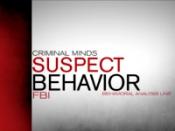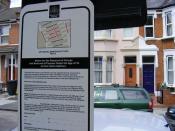Running Head: ANTISOCIAL BEHAVIOR IN CHILDREN
Antisocial Behavior in Children
Capella University
Dr. Conis
February 28, 2011
Antisocial Behavior in Children
Antisocial behavior is described by psychologists as habitual actions that are more serious that violates personal rights, laws, or widely held social norms. There are various behaviors associated with the aforementioned term. These antisocial behaviors range from homicide and sexual assault to verbal assault and vandalism. The frequency of antisocial behavior has escalated dramatically in our society over the last few decades and it is the best predictor of future delinquent behavior.
Delinquency, especially chronic delinquency, in turn, is highly predictive of adult criminality. Behavioral signs of antisocial behavior can be either overt or covert in nature. "Overt indicators include adult defiance, problems with rule-govern behavior, aggression that often results in assault, humiliation of peers, bullying, and extreme forms of noncompliance and oppositional behavior" (Kauffman, 2004). "Covert indicators are lying, cheating, and stealing, drug and alcohol abuse at very early ages, and very serious offenses such as burglary, shoplifting, and fire setting" (Kauffman, 2004).
Prevention of covert antisocial behavior in many ways parallels prevention of overt aggression. Character training or moral education seems particularly relevant to the prevention of stealing, lying, vandalism and so on. However moral behavior often does not match moral judgment in fact moral behavior tends to be controlled by situational factors as by moral or character traits; young children tend to be honest or altruistic at some times and in some situations but not in others.
"Risk factors refer to individual attributes and developmental experiences that are believed to increase the probability that a person will engage in persistent antisocial or delinquent behavior" (Bartol & Bartol, 2008). Bartol & Bartol (2008), refer to four types of risks to include: individual attributes, family characteristics, extrafamilial influences...


